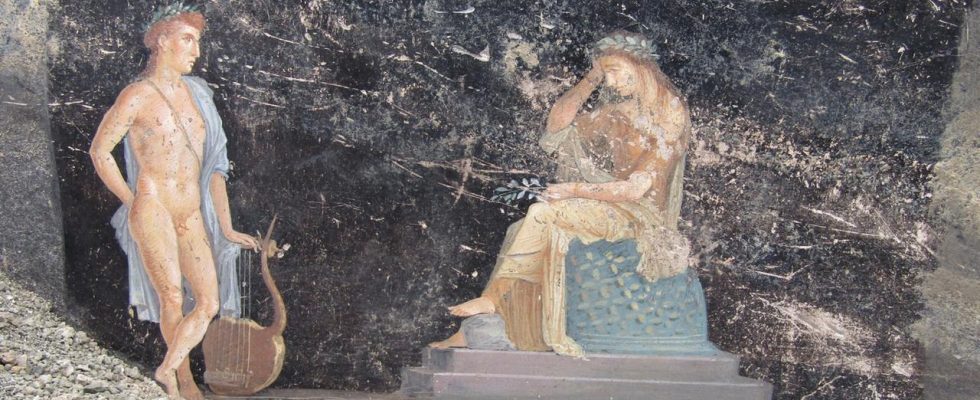In the ancient Italian city of Pompeii, archaeologists have unearthed a magnificent banquet hall. The walls are decorated with frescoes depicting motifs from the Trojan War. This should probably encourage the parties to talk.
During excavations in the Italian ruined city of Pompeii, archaeologists have uncovered a magnificent banquet hall decorated with elaborate frescoes of mythological figures from Homer’s Trojan War. As the excavation site, led by German archaeologist Gabrielzuchtriegel, announced, the hall is impressively large, measuring fifteen by six meters.
The Greek Queen Helena and the Trojan Prince Paris, who kidnapped Helena in Homer’s Iliad and thus triggered the Greek war against the city of Asia Minor, are depicted on a black background. You can also see, among other things, Paris’ sister Cassandra – who in Homer warned the Trojans in vain about the wooden horse given to them by the Greeks, in which Greek soldiers were hidden.
Banquets after sunset
Thanks to the painting’s black ground, the trembling light from the oil lamps gave the impression that the painted figures were moving, explained excavation manager breedingriegel. This technology also prevented the smoke from the oil lamps from being visible on the walls.
The hall was used for upscale entertainment, explainedzuchtriegel. People would probably have met in the room for banquets after sunset. The illustrations therefore served to entertain the guests and provide topics of conversation.
Italy’s Culture Minister Gennaro Sangiuliano praised the discoveries as further evidence of the magic of Pompeii. The buried city “never ceases to surprise us, because every time we dig we find something beautiful and significant.”
The focus of the excavations is shifting
The mosaic-floored hall opens onto a courtyard near a staircase that led to the first floor of the home, a news release from the Pompeii Archaeological Park said. Excavations there have recently focused on areas of the city where the middle class and service personnel lived.
The focus used to be on the elaborately frescoed upper-class villas of Pompeii. The excavations that led to the discovery of the banquet hall are intended to improve the hydrogeological structure of the archaeological park to arm the UNESCO World Heritage site against climate extremes such as heavy rain and extreme heat.
Large parts of the city well preserved
Pompeii was buried by an eruption of the volcano Vesuvius in 79 AD, but was unusually well preserved by the volcanic ash. The archaeological remains have been a UNESCO World Heritage Site since 1997. Archaeologists believe that 15 to 20 percent of Pompeii’s population died in the volcanic eruption. Of the 22-hectare archaeological site, about a third is still buried under volcanic ash. The archaeological site near Naples is one of the most popular tourist destinations in Italy.

